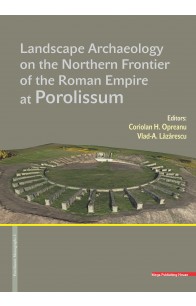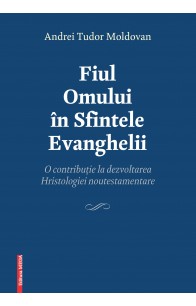Rezultate căutare pentru 'Vlad Andrei L��z��rescu'
„The frontiers of the Roman Empire, over 5000 km long, stretch from the Atlantic coast of Scotland, along the Rhine and the Danube, also enclose the Banat region and Transylvania, then going down along the Oriental Carpathians to the Black Sea; from the southern coast of the Black Sea they continue towards the Near East until the Red Sea; then, in North Africa, they line the edge of the Sahara desert until the Atlantic coast of Morocco. Over this entire area, visible traces of fortifications, roads and settlements are still preserved, but numerous monuments still lay hidden underneath the earth. Despite the fact that the Roman frontiers crossed regions with different relief and climate, they constitute a whole in that they were designed to protect Roman territories. The research of these monuments and the preservation policy regarding them was and is unequal in the various presentday states on whose territory traces of the Roman frontier are to be found. Consequently, in the ‘80s of the 20th century, the idea of globally protecting the Roman frontiers, viewed as a unitary monument, was met. In 1987, Hadrian’s Wall in United Kingdom was declared a UNESCO monument. It was followed in 2005 by the German-Raetian sector, on which occasion the UNESCO committee decided to set up the ‘Frontiers of the Roman Empire’ site. (...)
This project through its complexity generated an interdisciplinary approach of the proposed subject stimulating such future attempts in the archaeological research field. By using the latest technical methods of non-destructive investigation the project did not damage the stratigraphy of the archaeological site obtaining instead a high amount of data otherwise time consuming judging from the archaeological excavations perspective contributing also to the preservation of the cultural heritage.” - Introduction
SOMMAIRE
Horea Poenar, A World to Win. But in Whose Image?
I. The Challenge of Community
Simon Harel, Face aux littératures des Premières Nations
Florin Poenaru, We, the People!: Community, Populism and the Crisis of Political Representation
Alex Cistelecan, Community Building in Post-historical Times
Vladimir Borțun, The EU is Naked: The Progressive Clothes of a Capitalist Project
Horea Poenar, Bad New World. The (Relative) Rebirth of the Commons
Călina Părău, Community and Togetherness after the Non-sharable
Alexandru Matei, De la métaphysique du « commun » au « comment vivre ensemble ». Jean-Luc Nancy et Roland Barthes sur la communauté
Aura Poenar, Reconstructing Communities. In Spite of all Machinery of Disimagination
Corin Braga, L’attaque contre l’individualité dans les antiutopies totalitaires modernes
Diana I. Santiago, Slaves and Slavery in the 19th Century Puerto Rican Literature
Laura T. Ilea, Inch’Allah : La honte et la « géographie de l’affect »
Emmanuela Pustan, On the Artistic Propensity of Pathology: Georges Didi-Huberman and the Invention of Hysteria
II. Communities at Work
Ioan Pop-Curșeu, Can Art (Re)build a Community? The Roşia Montană Case, between Past and Future
Ruxandra Cesereanu, Political Escapes from Prisons and Camps in the 20th Century – Antisystemic Mentalities
Marius Lazăr, What Can Be Seen. Documenting the Transition Between Telling and Showing
Carmen Borbély, Communities under Erasure in Seamus Deane’s Reading in the Dark
Petronia Popa Petrar, Written Communities: Imagining Connection in Virginia Woolf’s Novels
Alina Monica Toma, Dystopian Community in Lois Lowry’s Novel The Giver
Amalia Cotoi, Mircea Nedelciu’s Community of Tratament fabulatoriu
Rareș Moldovan, The State of Play: Geektopia in Ready Player One
Doru Pop, Deterritorialized Cinema, Dislocated Spaces and Disembodied Characters in Bogdan Mirică’s Câini
Mihaiela Ilea, Niche Structures in Television. Video Poetry – Visually Reading the Reality
Răzvan Cîmpean, Kaleidoscopic History. Visually Representing Community in Tarkovsky’s The Mirror
Cristina Popescu, The Woman as a Misfit in Michelangelo Antonioni’s Tetralogy
Cristina Diamant, Stranger(s’) Voices at Home. The Many Faces of Cillian Murphy as the Misfit
Iulia Rădac, The Posture of the Writer in a Teenager’s Book: Mircea Eliade’s Romanul Adolescentului Miop
Book Reviews
„Lucrarea Fiul Omului în Sfintele Evanghelii. O contribuţie la dezvoltarea hristologiei noutestamentare a constituit, iniţial, proiectul tezei de doctorat a Părintelui Moldovan Andrei Tudor (Ierom. Iosif), susţinută în anul 2016, la Facultatea de Teologie Ortodoxă a Universităţii Babeş-Bolyai, sub îndrumarea Pr. Prof. Univ. Dr. Stelian Tofană, titularul Catedrei de studiul Noului Testament a facultăţii mai sus amintită.
Analizând lucrarea de faţă, fac câteva remarci cu privire la semnificaţia şi importanţa subiectului cărţii, care, cu siguranţă, îl va ajuta pe cititorul „neteolog” să descifreze mai bine meandrele abordării respectivei teme. În ultimul timp, în literatura de specialitate, titlul „Fiului Omului”, singurul pe care Iisus şi L-a împropriat, a căpătat diferite interpretări, mai mult sau mai puţin apropiate de semnificaţia sa originală.” (din „Prefaţă”)
Țara Năsăudului este una dintre micro-regiunile României care s-a bucurat de o atenţie ştiinţifică aparte, nu doar din partea istoricilor, ci dinspre întregul spectru al ştiinţelor umaniste şi sociale. Bibliografiile istorice ale României au acumulat, volum de volum, numeroase titluri dedicate temei: fie cărţi, fie studii şi articole provenite atât din periodice ştiinţifice locale, cât şi din principalele reviste de istorie din centrele universitare sau din diverse volume de studii. Această valoroasă literatură ştiinţifică a devenit în timp tot mai amplă, solicitând cercetătorilor, şi mai ales cercetătorilor debutanţi, un efort consistent de documentare bibliografică.
Organizarea şi activitatea Regimentului 17 (2 românesc) de graniţă pe teritoriul năsăudean au legat acest spaţiu de ansamblul istoriei Monarhiei habsburgice într-un mod mai intim şi pe alocuri chiar mai spectaculos decât alte regiuni locuite de români. (din „Introducere”)







